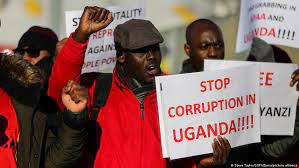The evils of violence whether delivered through word, system, institution or deed cannot lead to a truly better world. We are
called to actively work for justice through means that honour our solidarity, the good of our community and human dignity.
FR. NICHOLAS ONYAIT MCCJ
By the time we had the editorial meeting to plan for this Issue of Leadership magazine, the world had witnessed many cases of peaceful and violent protests. There were the famous Gen Z protests in Kenya, which were a reaction of the young generation to the country’s 2024 finance bill, which would have led to increased taxation. Other issues raised by the protestors included the demand for the resignation of President Ruto, the high levels of corruption, police brutality, and the luxurious lifestyle of the politicians.
The President, William Ruto had to reshuffle his cabinet. These protests were marred by many acts of brutality. The wave of the protests crossed over to Uganda more or less in the same month. The young generation of Ugandans protested against corruption and demanded the resignation of the Speaker of Parliament Honourable Anita Annet Among. However, most of the protestors found themselves bundled into police vans and ended up behind bars, arrested and detained. What was supposed to be a peaceful expression of the right to speak out and demand accountability was marred by experiences of violence. Some people lost lives, while others had their businesses antagonized or looted.
Violent protests also sparked off in the UK after the fatal stabbing of three young girls in a dance school in the town of Southport. It was alleged that the suspect involved in the murder of the three girls was an immigrant who had entered the country illegally so in a way, misinformation and anti-immigration sentiments sparked off the violent protests in which several police officers were wounded as they tried to quell the rioters.
In Uganda, there was also the murder of the retired headteacher of St Peters College Tororo, Mr. Joseph Francis Olokojo, who is said to have been lured out of his house at night by a noise in his compound from his would-be assassins. They are said to have beaten him up before setting him ablaze. These are just a drop in the ocean of some occurrences of violence in recent months. Of course, not mentioning many victims of the war in the Middle East and the war between Russia and Ukraine and others who daily suffer the consequences of the violence of others and some whose lives are terminated in a very uncouth way.
Violence has become so frequent and is raging the world from different angles; in the family, on the streets, in schools, in families and in the mass media.
One notable thing archetypal from all these episodes of protests and violence is that they have been reactions to particular happenings in the named countries or particular provocations known or unknown. The ideology is that the world seems to use violence as a counter-reaction to what is not going well. A violent response is taken as the quick solution to eliminate or counteract certain provocations.
These provocations may be actions of violence themselves or even just sentimental. For example, the first scenario of violence in the Holy Scriptures is in Genesis 4:8 in which Cain killed his brother Abel out of jealousy. Thus, violent actions arise not only as a reaction to a violent implication. The magnitude of violence as a response is never justifiable because it never restores peace or harmony among parties. So, the million-dollar question is; why would people resort to violence as “an avenue of resolving conflicts” or reacting to different kinds of provocations? Why the hatred, why the political anarchy?
We see lives destroyed in wars day in and day out, yet the world seems to learn nothing from experiences of the past. The prevalence of these kinds of protests is an expression of dissatisfaction with those in authority and is also an indicator of a society in which things are not running well, thus something has to be corrected.
Nonviolence and the Catholic Social Doctrine
The Oxford Dictionary of English defines violence as “a behavior that causes harm by use of force”. It can be an action or a word intended to hurt people. Violence is an evil response against evil. It is unacceptable as a solution to problems. It is unworthy and is a lie that goes against the truth of faith and the truth of humanity according to Saint John Paul II. Whenever a person is involved in anything that does not uphold the truth of faith and humanity, it means violence has been inflicted on another.
Thus, violence can be an action, a word, or even a sentiment that is triggered towards the destruction of the peace of the other. Violence is a threat to life, a threat to living. The Social Teaching of the Church, whose purpose is to provide a vision for a just society in which the dignity of all people is recognized and those who are vulnerable are cared for, highlights nonviolence as one of its principles. As a social thought and guide of the Church, the principle of nonviolence, like the other six principles of; life and dignity of the human person, call to family, community and participation, rights and responsibility, care for creation, subsidiarity, dignity of work, right to common good and the principle of the preferential option for the poor, are used to reflect and guide on how to relate with one another in a local and global community (cf. introduction to the Catholic Social Doctrine).
The principle of non-violence (peace) in the social teaching of the Church states that: “the evils of violence whether delivered through word, system, institution or deed cannot lead to a truly better world. War and violence impose an unjust peace. We are called to actively work for justice through means that honour our solidarity, the good of our community and human dignity”.
This principle reiterates the fact that violence is never justified and is not a solution to peace. Over the years, there have been nonviolent or peaceful protests in different parts of the world that yielded positive results. Talk of the salt match of India in the 1930s against the British resolution not to let any Indian collect or sell salt. Talk of the suffrage parade in the United States for equal political opportunities for women. Talk of the Montgomery bus boycott in Alabama, United States in 1955. All these protests in a way applied the principle of nonviolent resistance through boycotting hunger strikes and other nonviolent ways of saying no. Effects of violence on society When looked at vis-à-vis nonviolence, violence has very detrimental effects on society. In fact, a violent man is described as barbaric, uncivilized, uncouth, and beast-like. Acts of violence tear the society and social life apart.
Through violence, the lives, dignity, and hope of many people have been lost. Its short-term and long-term effects are hard to erase and may act as motivators of a spirit of revenge and retaliation. Psychologically,exposure to violence destroys the ability to imagine a nonviolent world. It is reported that in the United States of America, many perpetrators of actions of violence have been victims of violence themselves. With such a chronic effect, violence destroys not only an individual but the entire society. Violence in any form can destroy the life, dignity, and hope of others. It poisons the mind in any way.
As mentioned earlier, violence can take different forms and exposure to scenes of violence can also have an effect on an individual and the community at large. Exposure to violent news, violent movies, violent video games, verbal violence, and many others can influence how one reacts to situations that are provocative. Each person has to make an effort to always choose what is peaceful and not harmful to others. The antidote for violence is nonviolence and peace. If people learn to act nonviolently, it will foster peace.
Mother Theresa of Calcutta who was also an ambassador of peace said that “it is love, not violence that conquers the world”. We win over our enemies; we win over actions of violence if we act out of love. However, this is a reciprocal desire. It must come from both parties but even if just one of the parties employs the principle of love and solidarity, then, surely, violence will be overcome. One cannot rule out the fact that the concurrent experiences of violence in society is also an indicator that there is a lot to work for, there is a lot that needs to be corrected and love can correct everything.
















